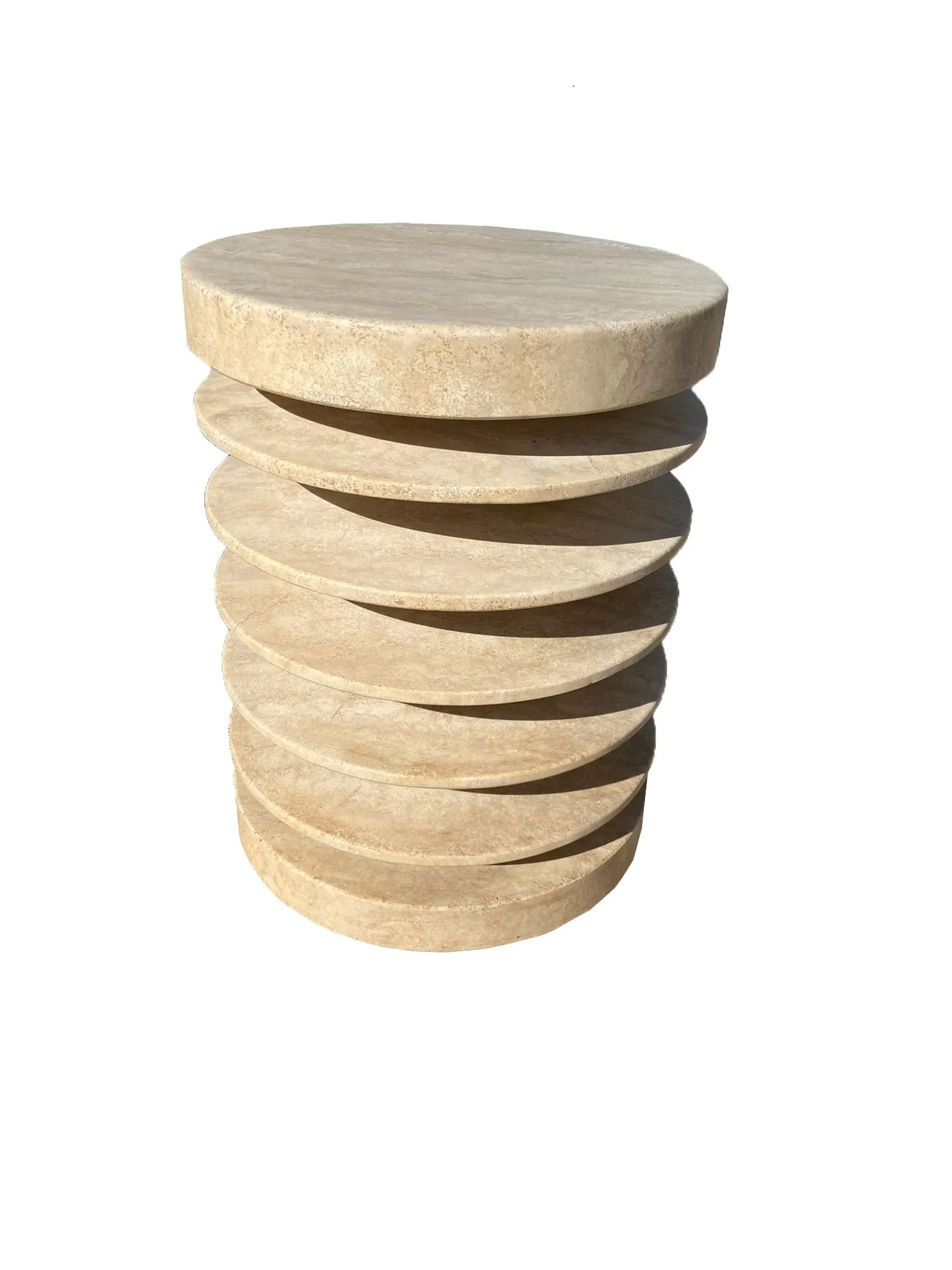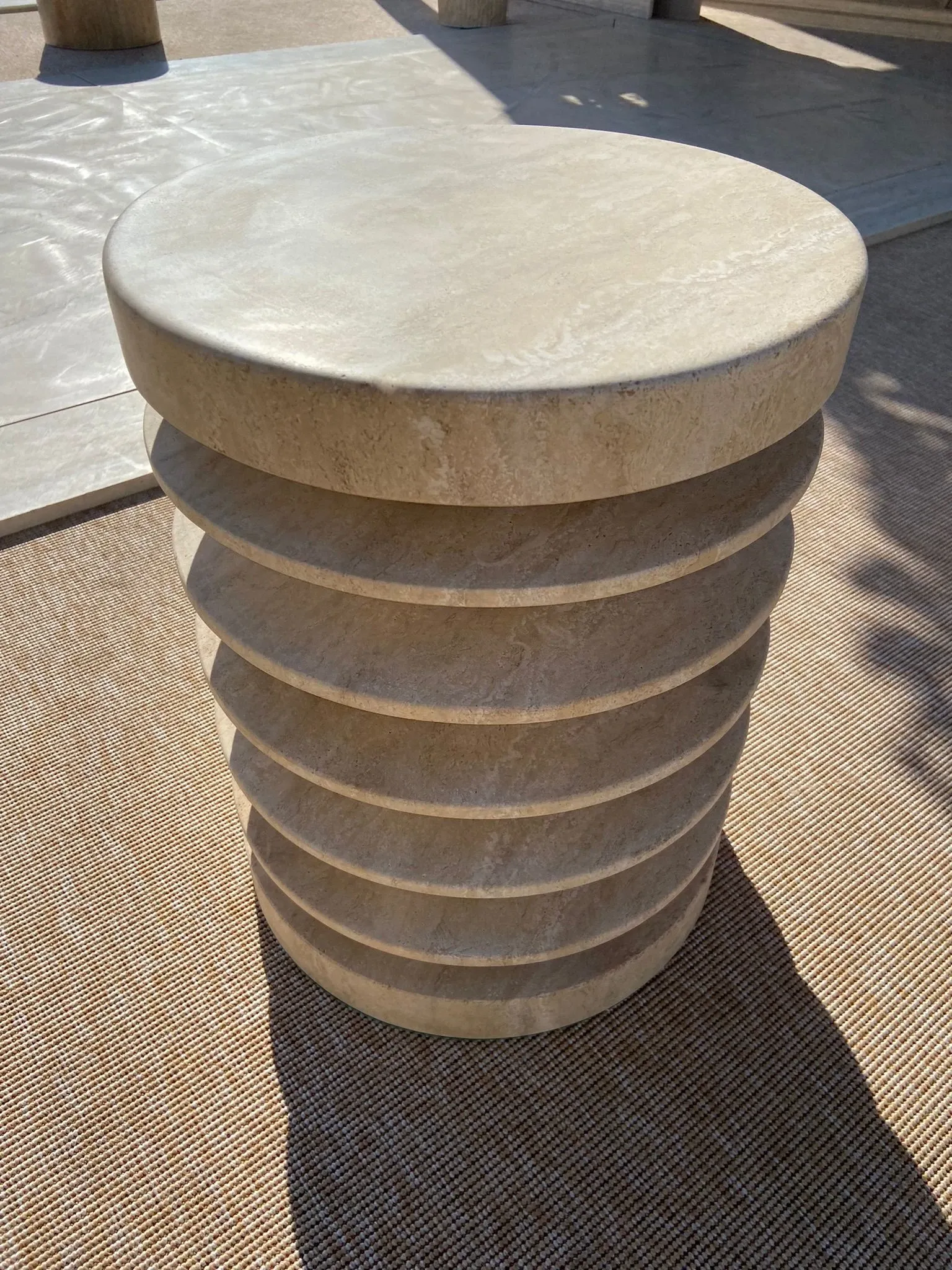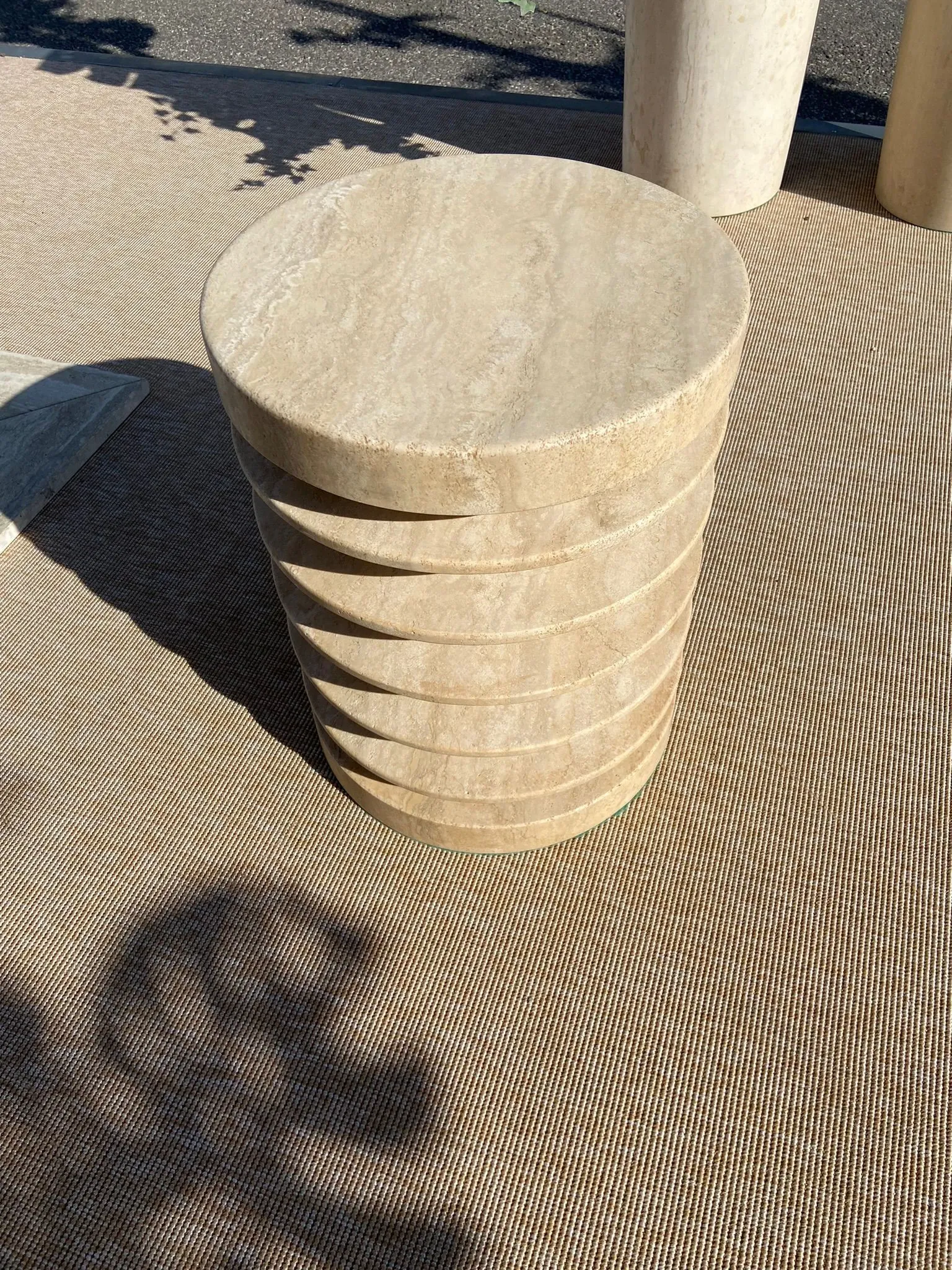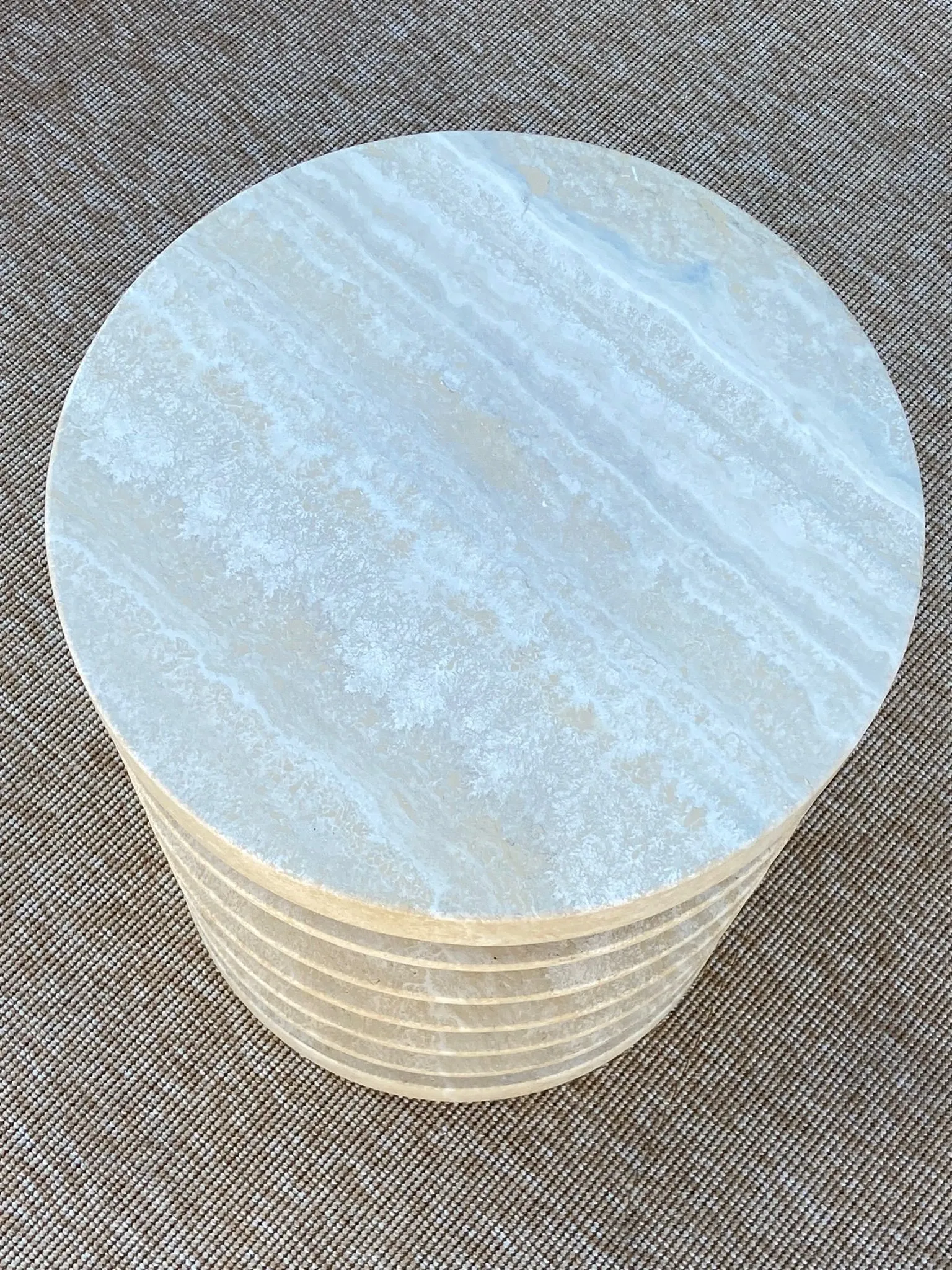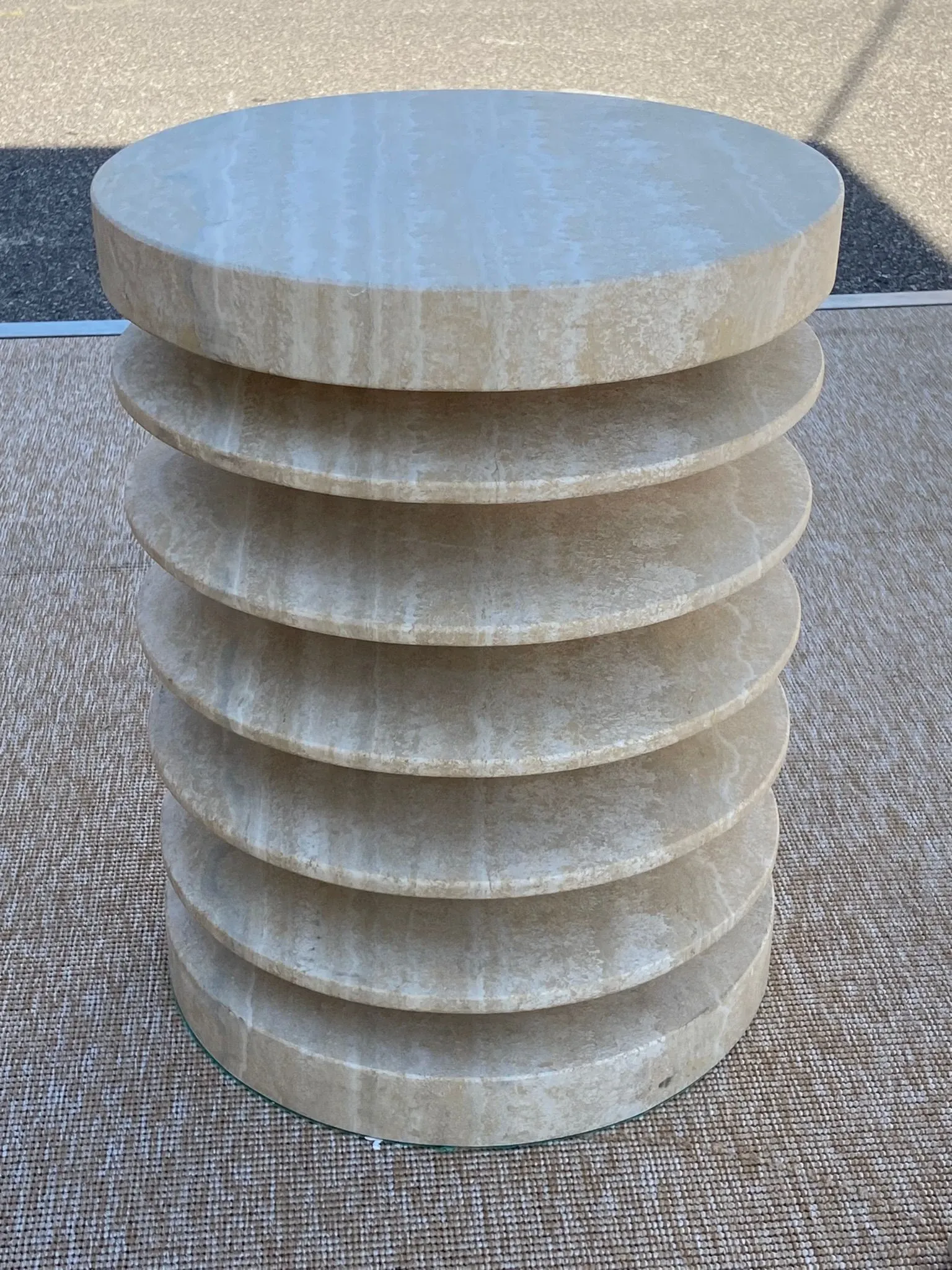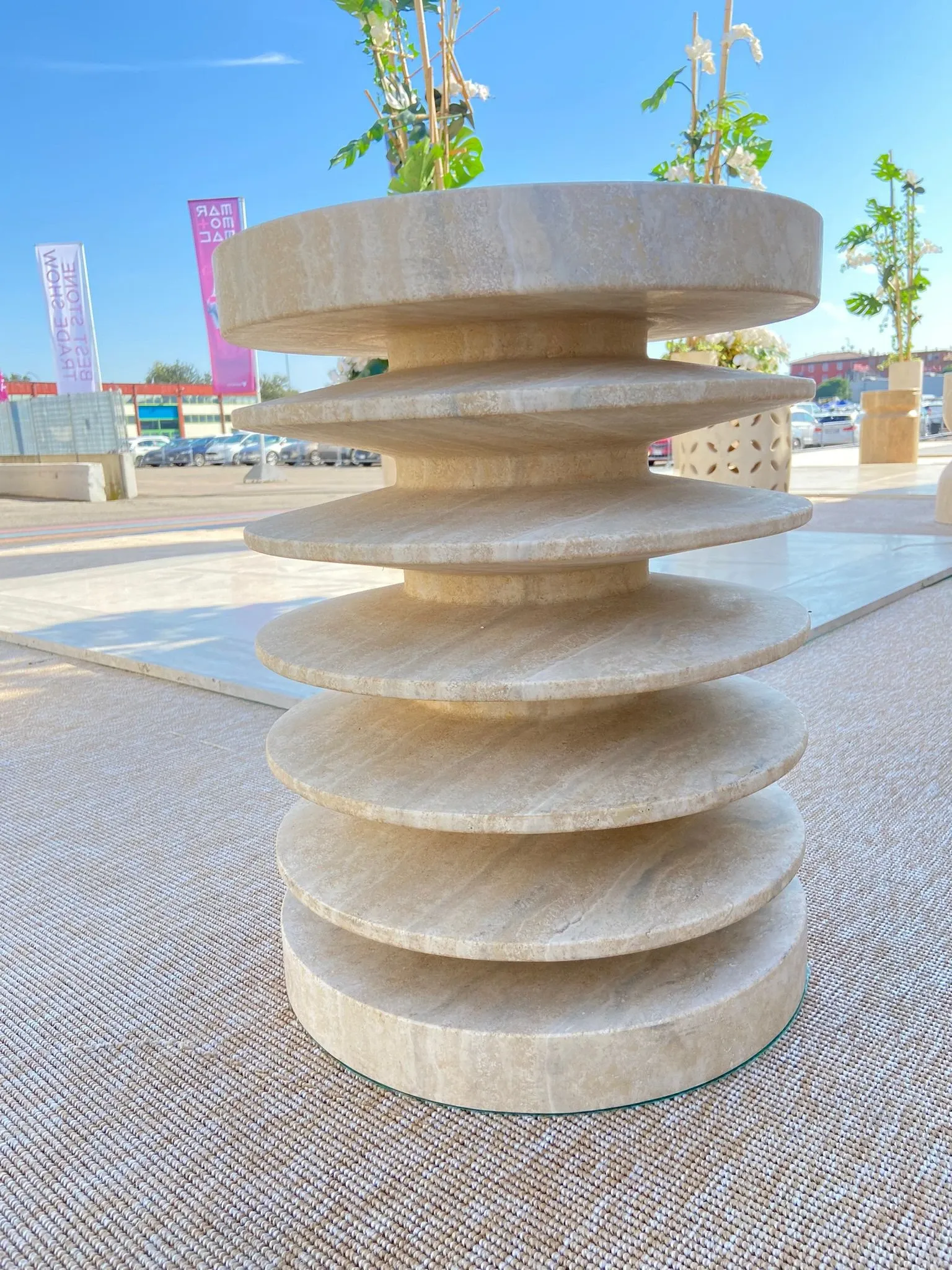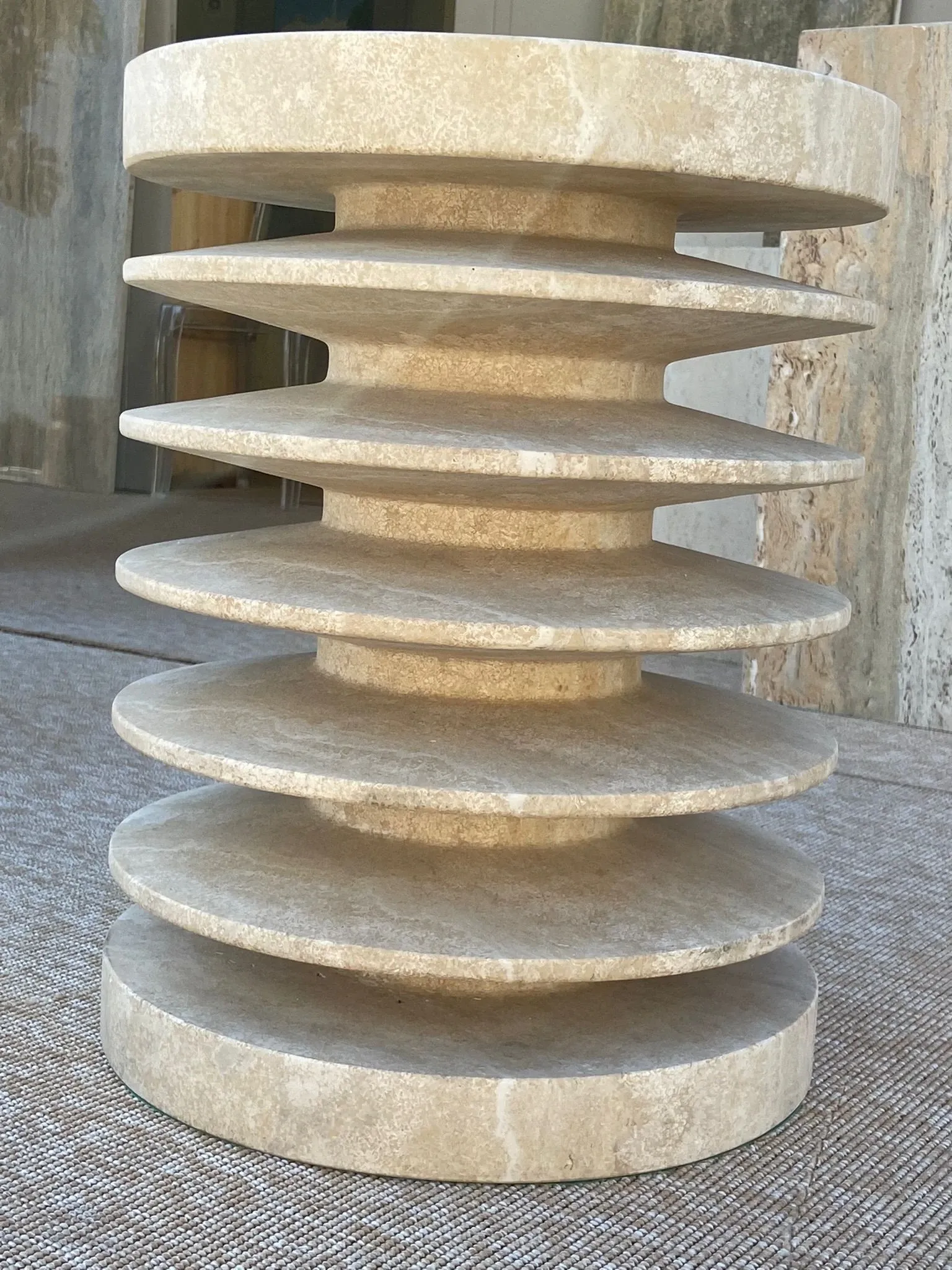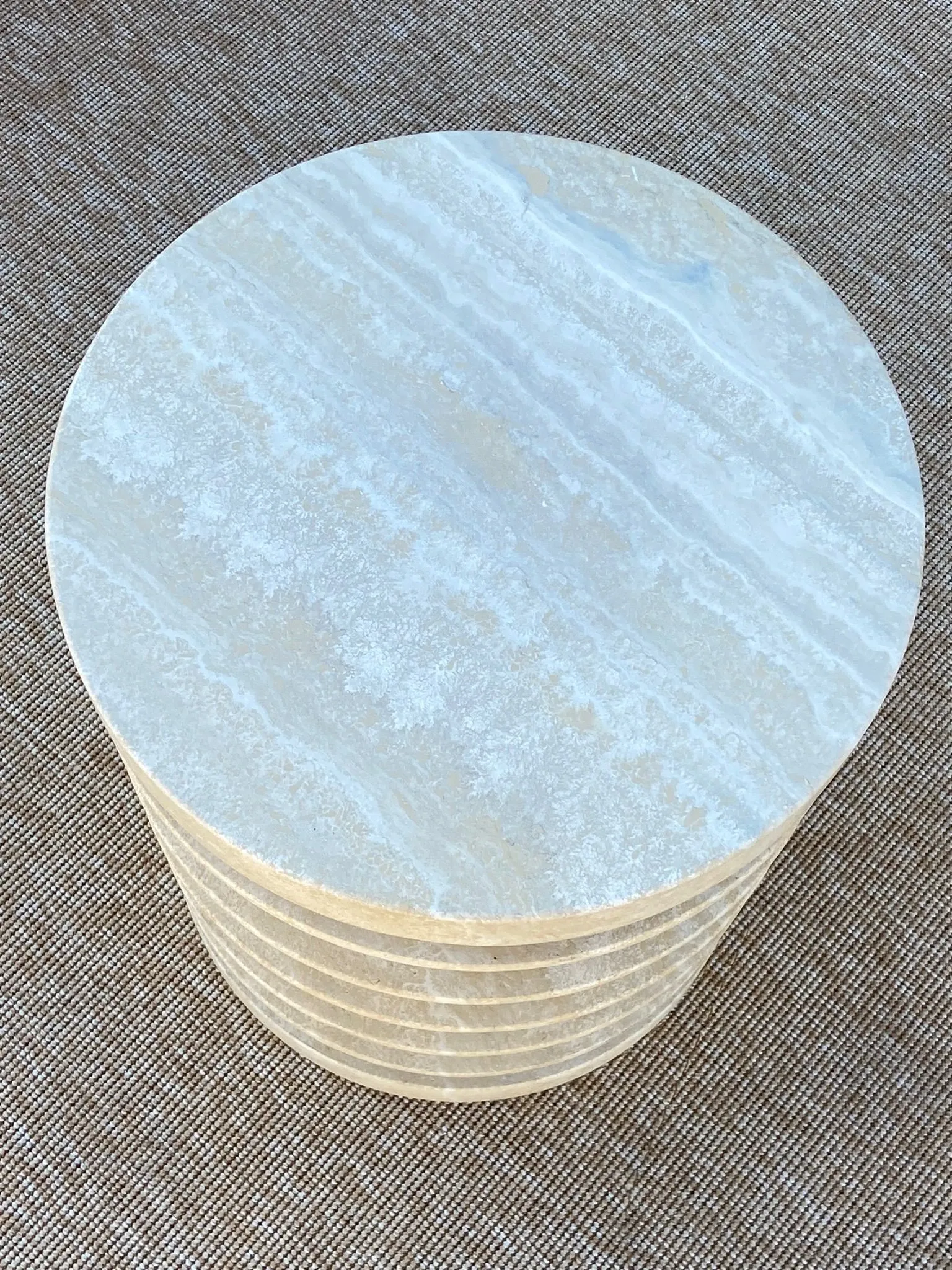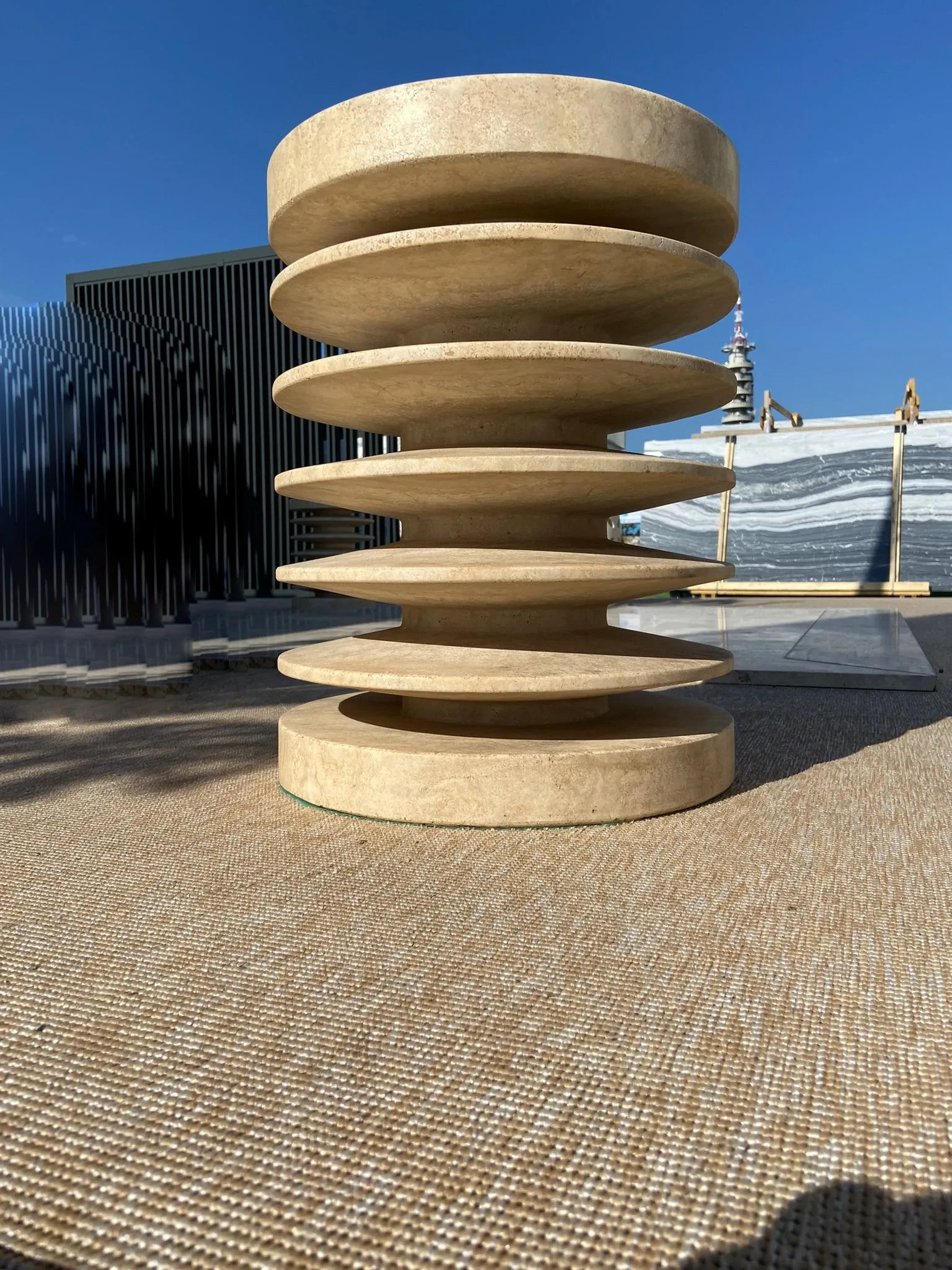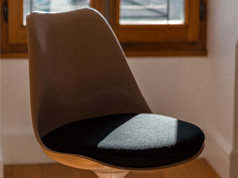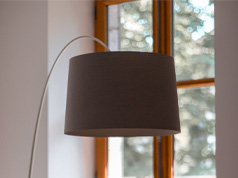DETAILS
SHIPPING AND REFUNDS
Description
Travertine stool for indoors or outdoors Made in Italy Travertine is a type of light, yellowish-coloured calcareous sedimentary rock of biogenic origin. The small cavities present in the semi-compact structure are typical of travertine. Very resistant to atmospheric agents, travertine has been used since Roman antiquity in construction as a construction and ornamental material. The Tiburtina stone commonly called travertine is composed of a limestone substance formed by sediment and produced in some part by the waters of the Aniene river and much more by the Albule waters which freely flowed through those plains before Cardinal Ippolito d'Este narrowed them into the canal that now it is called the “Solfatara”. Many quarries of this stone are in the surroundings of Tivoli and extend from the slopes of the mountains of that city to the sulphurous water river commonly called the "Solfatara". In the quarry to which they give the name "delle Caprine" in the direction of Monticelli the travertine is yellowish white in colour, harder and more compact than any other. In the quarry called “delle Fosse” which is on the plains of San Clemente, the clearest, softest and most pitted travertine is extracted. This quarry was chosen by the knight Lorenzo Bernini to extract the travertines used in the construction of the famous colonnade of Vatican Square, and there for the convenience of the workers a large factory was erected which even today bears the name of "Casal Bernini". In Italy, the best travertines come from the plain below Tivoli (today largely belonging to the municipality of Guidonia). The Latins called it lapis tiburtinus, and made it one of the main building resources of the city, when they began to enrich it with stones other than local tuffs.
Specifications
| MATERIALS | Travertine |
| COLORS | Beige |
| STYLE | Brutalist |
| DIMENSIONS |
W.
36 cm
D.
36
cm
H.
47
cm
S.H.
47 cm |
Conditions of use
Excellent - display use
Shipping service
We only use professional couriers carefully selected based on the size, weight / volume and fragility of the product. All shipments are insured, we coordinate both collection and delivery by providing dedicated assistance throughout the entire process. Shipping is standard and does not include delivery to the floor. Do you want delivery to the floor?
DISCOVER MORE
Refund Policy
This product comes from a selected shop, you can exercise your right to a refund within 14 days of delivery . If the product is delivered damaged or does not conform to the product sheet, it is possible to open a claim.
DISCOVER MOREDescription
Travertine stool for indoors or outdoors Made in Italy Travertine is a type of light, yellowish-coloured calcareous sedimentary rock of biogenic origin. The small cavities present in the semi-compact structure are typical of travertine. Very resistant to atmospheric agents, travertine has been used since Roman antiquity in construction as a construction and ornamental material. The Tiburtina stone commonly called travertine is composed of a limestone substance formed by sediment and produced in some part by the waters of the Aniene river and much more by the Albule waters which freely flowed through those plains before Cardinal Ippolito d'Este narrowed them into the canal that now it is called the “Solfatara”. Many quarries of this stone are in the surroundings of Tivoli and extend from the slopes of the mountains of that city to the sulphurous water river commonly called the "Solfatara". In the quarry to which they give the name "delle Caprine" in the direction of Monticelli the travertine is yellowish white in colour, harder and more compact than any other. In the quarry called “delle Fosse” which is on the plains of San Clemente, the clearest, softest and most pitted travertine is extracted. This quarry was chosen by the knight Lorenzo Bernini to extract the travertines used in the construction of the famous colonnade of Vatican Square, and there for the convenience of the workers a large factory was erected which even today bears the name of "Casal Bernini". In Italy, the best travertines come from the plain below Tivoli (today largely belonging to the municipality of Guidonia). The Latins called it lapis tiburtinus, and made it one of the main building resources of the city, when they began to enrich it with stones other than local tuffs.
Specifications
| MATERIALS | Travertine |
| COLORS | Beige |
| STYLE | Brutalist |
| DIMENSIONS |
W.
36 cm
D.
36
cm
H.
47
cm
S.H.
47 cm |
Conditions of use
Excellent - display use
